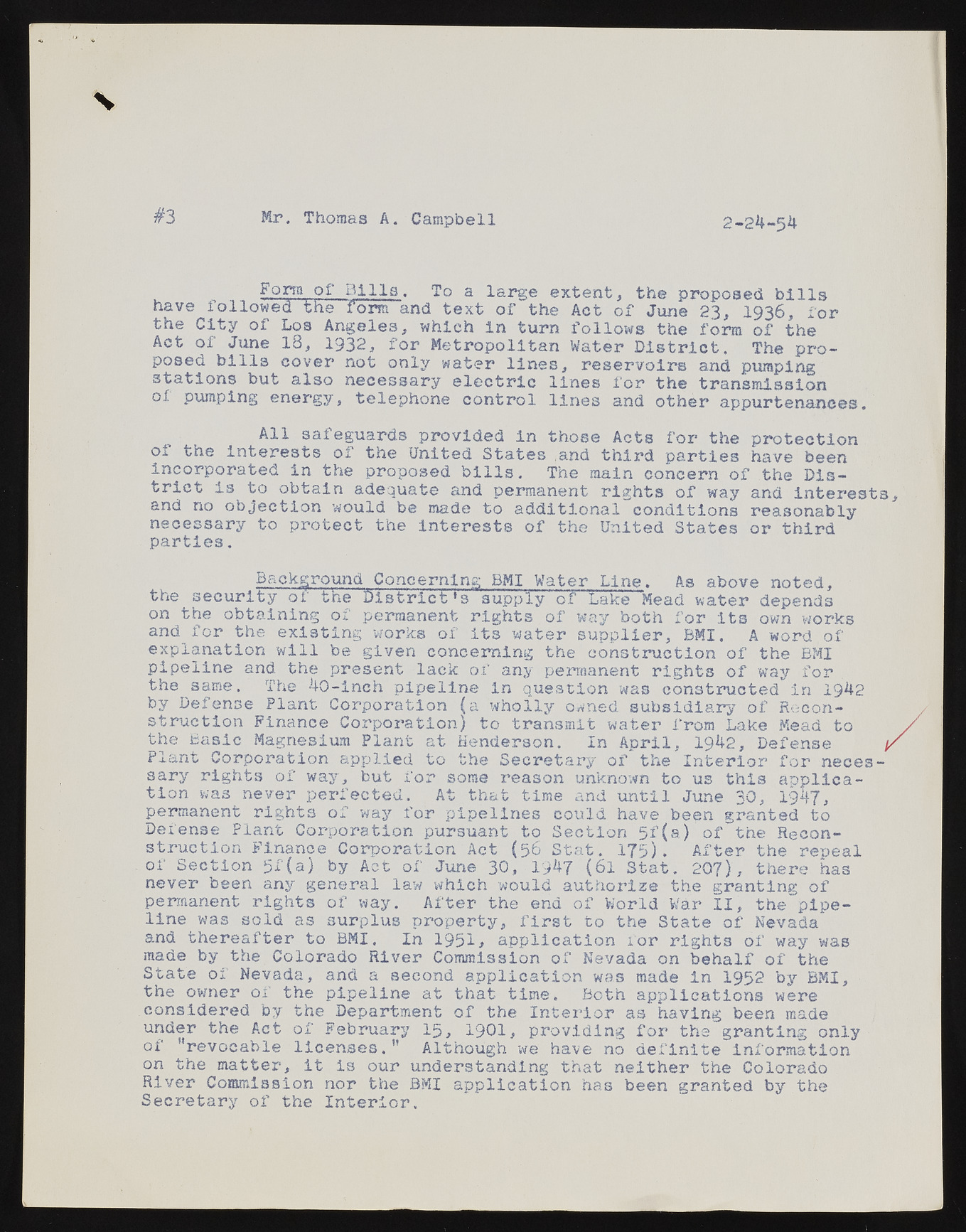Copyright & Fair-use Agreement
UNLV Special Collections provides copies of materials to facilitate private study, scholarship, or research. Material not in the public domain may be used according to fair use of copyrighted materials as defined by copyright law. Please cite us.
Please note that UNLV may not own the copyright to these materials and cannot provide permission to publish or distribute materials when UNLV is not the copyright holder. The user is solely responsible for determining the copyright status of materials and obtaining permission to use material from the copyright holder and for determining whether any permissions relating to any other rights are necessary for the intended use, and for obtaining all required permissions beyond that allowed by fair use.
Read more about our reproduction and use policy.
I agree.Information
Digital ID
Permalink
More Info
Rights
Digital Provenance
Publisher
Transcription
#3 Mr. Thomas A. Campbell 2-24-54 Form of Dills. To a large extent, the proposed bills have followed the form and text of the Act of June 23, 1 9 3 6 , for the City of Los Angeles, which in turn follows the form of the Act of June 18, 1932, for Metropolitan Water District. The proposed bills cover not only water lines, reservoirs and pumping stations but also necessary electric lines for the transmission of pumping energy, telephone control lines and other appurtenances. All safeguards provided in those Acts for the protection of the interests of the United States and third parties have been incorporated in the proposed bills. The main concern of the District is to obtain adequate and permanent rights of way and interests and no objection would be made to additional conditions reasonably necessary to protect the interests of the United States or third parties. Background Concerning BMI Water Line. As above noted, the security of the Districts supply of Lake Mead water depends on the obtaining of permanent rights of way both for its own works and for the existing works of its water supplier, BMI. A word of explanation will be given concerning the construction of the BMI pipeline and the present lack of any permanent rights of way for the same. The 40-inch pipeline in question was constructed in 1942 by Defense Plant Corporation (a wholly owned subsidiary of Reconstruction Finance Corporation) to transmit water from Lake Mead to the Basic Magnesium Plant at Henderson. In April. 1942, Defense Plant Corporation applied to the Secretary of the Interior for necessary rights of way, but for some reason unknown to us this application was never perfected. At that time and until June 30, 1947, permanent rights of way for pipelines could have been granted to Defense Plant Corporation pursuant to Section 5 f(a) of the Reconstruction Finance Corporation Act (5 6 Stat. 175). After the repeal of Section 5f(a) by Act of June 30, 1947 (6 l Stat. 207), there has never been any general law which would authorize the granting of permanent rights of way. After the end of World War II, the pipeline was sold as surplus property, first to the State of Nevada and thereafter to BMI. In 1951> application for rights of way was made by the Colorado River Commission of Nevada on behalf of the State of Nevada, and a second application was made In 1952 by BMI, the owner 01 the pipeline at that time. Both applications were considered by the Department of the Interior as having been made under the Act of February 1 5 , 1901, providing for the granting only of "revocable licenses." Although we have no definite information on the matter, it Is our understanding that neither the Colorado River Commission nor the BMI application has been granted by the Secretary of the Interior.

